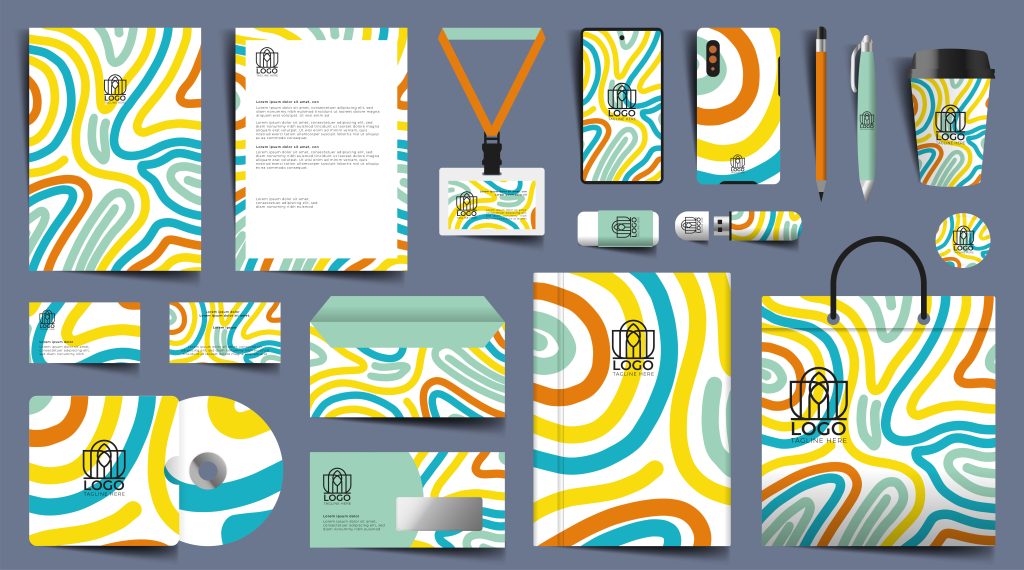Introduction
Promotional Products- Effective advertising and brand promotion are more crucial than ever. Companies are constantly searching for innovative ways to capture the attention of their target audience and leave a lasting impression. One such strategy that has gained significant popularity is the use of promotional products. However, in a world inundated with traditional promotional items, businesses are now turning to printing on unique materials to differentiate themselves and stand out in the crowd.
The concept of printing on unique materials involves going beyond the conventional options of paper, plastic, or fabric and exploring alternative surfaces that can serve as powerful advertising platforms. From eco-friendly materials like bamboo and recycled paper to unconventional items like water bottles, tote bags, or even technology accessories, the possibilities are vast.
By choosing to print on unique materials, businesses have the opportunity to showcase their brand in a visually appealing and memorable manner. These materials can be customized with company logos, slogans, or captivating designs, effectively transforming everyday objects into powerful marketing tools.
What is printed promotional material?
Print marketing materials are any type of asset that needs printing and is distributed physically. A typical example of a printed marketing asset is the brochure. Furthermore, there are also flyers, posters and event programs.
These materials serve as tangible representations of a company’s marketing efforts and are distributed to potential customers or clients through various channels, including trade shows, conferences, direct mail, point of sale displays, and street marketing. The primary goal of printed promotional material is to capture attention, generate interest, and convey key messages about the featured offering or organization.
Printed promotional materials offer several advantages in the marketing landscape. Firstly, they provide a tangible and lasting impression, allowing individuals to physically interact with the information being presented. This tactile experience can be more memorable and impactful than digital-only advertising methods. Printed promotional material also offers versatility in terms of customization and targeting. Businesses can tailor their designs and messages to specific target audiences, ensuring that the materials resonate with their intended recipients. For instance, a high-end fashion brand may create elegant and visually stunning brochures to appeal to their affluent customer base, while a tech startup may opt for sleek and modern business cards to convey innovation and sophistication.

What are the promotional materials in marketing?
Promotional materials are all printed, written, and graphic means of promoting a business, mainly through the company’s name and logo. They can also be seen as promotional items or promotional products.
Promotional materials in marketing refer to various tools and resources used to promote a product, service, event, or brand. These materials are designed to capture the attention of the target audience, generate interest, and communicate key messages effectively. Promotional materials can take on a wide range of forms, including printed materials like brochures, flyers, posters, and banners, as well as digital assets such as websites, social media posts, email campaigns, videos, and infographics.
Printed promotional materials have long been a staple in marketing campaigns. They offer a tangible and tactile experience, allowing individuals to physically interact with the information being presented. Brochures and flyers can be distributed at trade shows, conferences, or retail locations, while posters and banners can be displayed in high-traffic areas to attract attention. These materials often incorporate visually appealing designs, vibrant colors, and captivating imagery to create a lasting impression.
Digital promotional materials have become increasingly prevalent in the digital age. Websites serve as the online storefront for businesses, providing detailed information, showcasing products or services, and facilitating customer interactions. Social media platforms offer opportunities to engage with a broader audience through targeted posts, advertisements, and contests. Email campaigns enable direct communication with customers, delivering personalized messages, special offers, or updates. Videos and infographics leverage visual storytelling to convey complex information in an engaging and easily digestible format.
What are the materials of advertising?
Advertising Material means the text, graphics, logos, designs, trademarks and copyrights for any type of advertising including, but not limited to banners, text ads, pop-ups and pop-unders created by an advertiser.
The materials of advertising encompass a diverse range of tools and mediums used to convey promotional messages and create brand awareness. These materials are designed to capture the attention of the target audience, inform them about products or services, and persuade them to take desired actions. Some common materials of advertising include print advertisements, television commercials, radio spots, outdoor billboards, online banners, social media ads, and search engine marketing.
Print advertisements have long been a traditional form of advertising, appearing in newspapers, magazines, brochures, and direct mail. They often feature compelling visuals, catchy headlines, and persuasive copy to engage readers and communicate key messages. Television commercials utilize audiovisual storytelling to reach a broad audience and leave a lasting impression. Radio spots leverage the power of sound and voice to deliver persuasive messages and drive brand recognition.
Outdoor billboards strategically placed in high-traffic areas provide wide exposure and capture the attention of passersby. They often employ bold graphics, concise messages, and eye-catching visuals to create an immediate impact. Online banners appear on websites and display networks, attracting users’ attention and driving traffic to specific landing pages.
Slogans provide memorable and concise phrases that encapsulate the essence of a product or company. Jingles, catchy tunes often accompanied by lyrics, help create brand recall and emotional connections. Packaging design plays a crucial role in product advertising, capturing attention on store shelves and conveying brand values and product benefits.

What are some examples effective promotional materials?
Types of Promotional Material that Work at Every Event
- Registration: Wristbands, tickets, passes. Tickets can easily be lost at festivals and concerts, and people will sometimes need to leave the venue temporarily
- Banners
- Brochures and pamphlets
- Stickers
- Business cards
- Programs
- Announcements
- Name tags and signs
There are several examples of effective promotional materials that businesses can utilize to effectively promote their products, services, or brand. One example is the use of well-designed brochures. Brochures offer a tangible and comprehensive way to present information about a company or its offerings. They can showcase product features, benefits, and pricing in an organized and visually appealing manner. Another effective promotional material is the use of eye-catching posters and banners. Placed in strategic locations, these large-format materials can quickly grab attention and convey key messages. They are particularly useful for promoting events, sales, or new product launches.
Business cards are another essential promotional material that can leave a lasting impression. They provide a compact and portable way to share contact information and serve as a reminder of a business or professional connection. Creative and well-designed business cards can also convey the brand’s personality and make a memorable impact.
Promotional giveaways are effective materials for increasing brand awareness and fostering customer loyalty. These can include items like branded pens, t-shirts, water bottles, or USB drives. By providing useful and high-quality items that feature the company’s logo or branding, businesses can create a positive association with their brand and increase visibility.
Digital promotional materials also play a crucial role in today’s marketing landscape. Websites serve as a central hub for information, allowing businesses to showcase their offerings, share testimonials, and provide contact details. Social media posts and ads are effective promotional materials for engaging with a wider audience, driving traffic to websites, and encouraging interaction.
What is a promotional method?
A promotion strategy is a plan to create or increase demand for a product. It outlines the tactics you’ll use to raise awareness about your product and get people interested in buying it. The goal of a promotion strategy is to introduce potential customers to your product and convince them to make a purchase.
It encompasses the various techniques and channels used to communicate key messages, generate interest, and encourage customer engagement. Promotional methods can take many forms, ranging from traditional advertising to digital marketing tactics.
Traditional promotional methods include print advertisements, television and radio commercials, billboards, direct mail campaigns, and event sponsorships. These methods rely on established media channels and physical materials to reach a wide audience. They often employ persuasive messaging, compelling visuals, and repetition to create brand awareness and drive customer actions.
Digital promotional methods have gained significant prominence with the rise of the internet and technological advancements. They include tactics such as search engine marketing (SEM), search engine optimization (SEO), social media marketing, email marketing, influencer collaborations, content marketing, and affiliate marketing.

What are the benefits of printing on unique materials for promotional products?
Printing on unique materials for promotional products offers several benefits that can significantly enhance the effectiveness and appeal of these items. Firstly, using unique materials creates a distinct and memorable impression on recipients. Instead of the traditional paper or cardboard, printing on materials like fabric, wood, metal, or glass adds a tactile and visual appeal that stands out from the crowd. This uniqueness catches the attention of potential customers and makes the promotional product more memorable, increasing brand recognition and recall.
Secondly, printing on unique materials allows for greater customization and personalization. Different materials offer diverse textures, finishes, and color options, enabling businesses to tailor the promotional items to their brand image and target audience. For example, a tech company may choose to print their logo on a sleek metal USB drive, reflecting their modern and innovative identity. On the other hand, a sustainable brand may opt for eco-friendly materials like recycled paper or bamboo, aligning their promotional products with their environmental values. This customization creates a stronger brand connection and increases the perceived value of the item, making recipients more likely to use and retain it.
For instance, printing on water-resistant materials ensures that the promotional item remains intact even in adverse weather conditions. This longevity ensures prolonged brand exposure as the product continues to be used or displayed over an extended period.
How can printing on unique materials enhance brand visibility?
Printing on unique materials can greatly enhance brand visibility by creating a distinct and eye-catching presence in the marketplace. When a brand chooses to print its logo or messaging on unconventional materials such as fabric, wood, metal, or glass, it immediately stands out from the sea of traditional promotional materials.
This uniqueness captures the attention of potential customers and makes the brand more memorable. The distinct tactile and visual appeal of these materials creates a lasting impression, increasing brand recognition and recall.
Moreover, printing on unique materials allows for customization and personalization, which further enhances brand visibility. Different materials offer diverse textures, finishes, and color options, enabling businesses to align the promotional items with their brand image and target audience. By choosing materials that reflect the brand’s values, personality, or industry, the promotional products become a direct representation of the brand itself.
For example, a fashion brand may opt for fabric materials that match their clothing line’s texture and patterns, instantly creating a cohesive and recognizable brand identity. This customization and personalization increase the chances of the promotional items being noticed and remembered by potential customers.

What are some creative examples of promotional products printed on unique materials?
Promotional products serve as powerful marketing tools that leave a lasting impression on customers. To stand out from the crowd, businesses have increasingly embraced the concept of printing promotional materials on unique and unconventional materials. One creative example is the utilization of eco-friendly materials such as bamboo or recycled paper. These sustainable choices not only showcase a company’s commitment to the environment but also provide a distinctive texture and appearance that captivate recipients.
Another innovative approach involves printing promotional messages or logos on unconventional surfaces like fabric or textiles. Custom-printed T-shirts, bags, or hats create walking billboards, spreading brand awareness wherever they go. The use of high-quality fabrics adds a touch of sophistication and ensures that the promotional products are not only visually appealing but also durable.
These unique materials add a tactile element that engages recipients and makes the product more memorable. For example, a company could distribute custom-printed wooden coasters featuring their logo, creating a practical and visually appealing item that customers can use daily.
By combining functionality with distinctive materials, businesses can create promotional products that are not only useful but also visually striking, making them more likely to be used and seen by others.
Conclusion
The utilisation of promotional products printed on unique materials has emerged as an effective and captivating strategy for advertisements. By exploring beyond traditional mediums, businesses have the opportunity to differentiate themselves and make a lasting impact on their target audience.
Printing on unique materials opens up a realm of creative possibilities, enabling companies to showcase their brand in innovative and memorable ways. From eco-friendly materials like bamboo and recycled paper to unconventional items such as water bottles or tote bags, the options are extensive. This approach not only captures attention but also conveys a company’s commitment to sustainability and creativity.
Promotional products, when strategically employed, serve as powerful marketing tools. They offer tangible and engaging ways to connect with customers, leaving a lasting impression. By printing on unique materials, businesses can tailor their promotional efforts to align with their brand identity and values, generating a stronger impact on their target market.